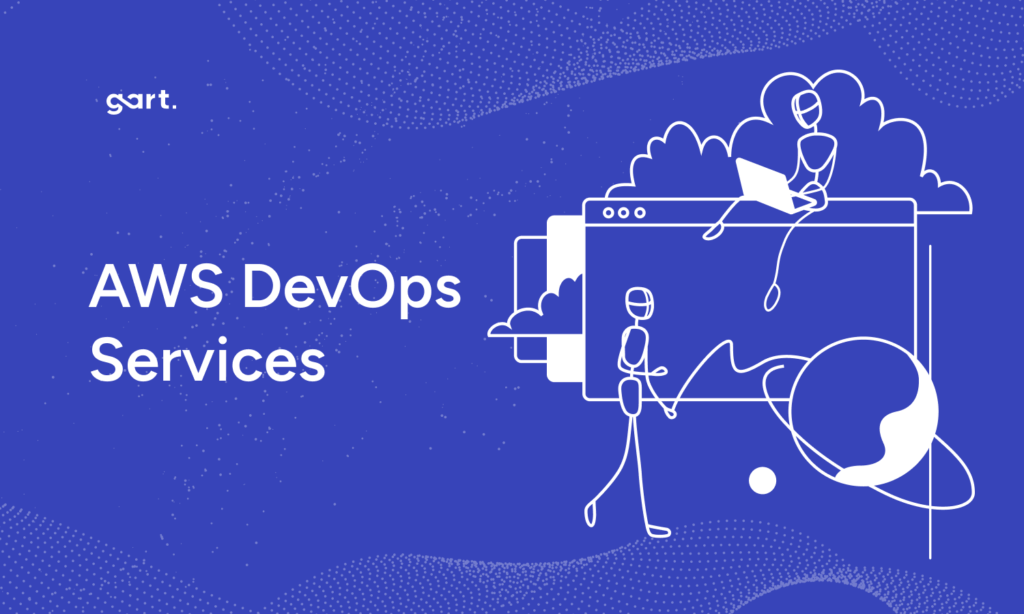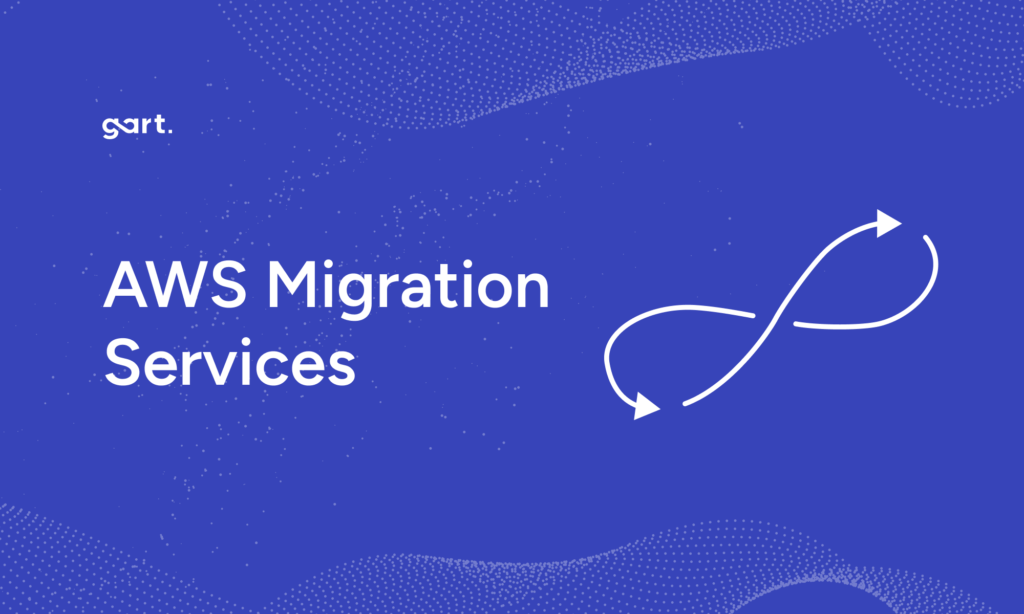
Amazon Web Services, commonly known as AWS, is a comprehensive cloud computing platform offered by Amazon. It provides a wide range of services, including computing power, storage, databases, machine learning, analytics, and more. AWS has gained immense popularity due to its flexibility, scalability, and cost-effectiveness.
[lwptoc]
What is AWS Consulting?
AWS consulting services encompass a range of strategic and technical assistance provided by experienced professionals to organizations seeking to harness the power of Amazon Web Services effectively. These services go beyond mere cloud infrastructure setup; they encompass a holistic approach to optimize an organization's AWS environment for efficiency, security, and scalability.
AWS consultants play a pivotal role in helping organizations navigate the complexities of AWS.
AWS consultants begin by assessing an organization's current infrastructure, business goals, and requirements. They then devise a comprehensive strategy for AWS adoption, ensuring that the chosen services align with the organization's objectives.
Consultants design AWS architectures that are tailored to meet specific needs, whether it involves migration, application development, or optimizing existing workloads. They ensure that AWS resources are provisioned optimally for performance and cost-effectiveness.
AWS consultants have a deep understanding of AWS pricing models and can help organizations minimize costs while maximizing the value of their investments. They identify cost-saving opportunities and recommend strategies for efficient resource utilization.
Security is a paramount concern in the cloud. AWS consultants assist in configuring robust security measures and ensuring compliance with industry-specific regulations. They help organizations protect sensitive data and mitigate security risks.
AWS consultants ensure that organizations can scale their infrastructure up or down as needed to accommodate changes in demand. They optimize AWS environments for high performance and availability, reducing downtime and latency.
Benefits of Hiring AWS Consultants
AWS consultants bring in-depth knowledge and experience to the table, ensuring that organizations make the best use of AWS services and features. With a focus on efficient resource allocation and usage, AWS consultants help organizations lower their operational costs and achieve better ROI.
Consultants streamline the AWS adoption process, reducing deployment times and accelerating the launch of new applications and services. Consultants help organizations identify and mitigate potential security and compliance risks, ensuring a secure and compliant cloud environment.
AWS consultants design architectures that enable organizations to scale effortlessly, accommodating growth without disruption.
By offloading the complexities of AWS management to consultants, organizations can concentrate on their core business objectives, innovation, and customer satisfaction.
In essence, AWS consulting services are a strategic investment that empowers organizations to leverage AWS's capabilities fully, minimize risks, and achieve long-term success in the cloud. They provide a roadmap for businesses to thrive in the digital era while optimizing costs and maintaining a strong focus on security and scalability.
AWS DevOps Services
Combine AWS cloud solutions with DevOps expertise for automated, optimized software development. Accelerate delivery, ensure secure CI/CD pipelines. Embrace the future of development confidently with AWS DevOps.
AWS Migration Services
Accelerate growth by migrating to AWS Cloud! We offer a swift transition from outdated on-premise platforms or less advantageous cloud platforms to AWS, optimizing your business flow and infrastructure.
Gart's Expertise in AWS
Gart has established itself as a trusted name in the cloud computing industry, boasting a rich history of experience and a dedicated team of certified AWS professionals.
Gart's services encompass a wide spectrum of AWS offerings, including but not limited to:
AWS infrastructure setup and optimization.
Migration of on-premises systems to AWS.
AWS cloud-native application development.
DevOps and automation on AWS.
Data analytics and machine learning solutions on AWS.
AWS security and compliance consulting.
By concentrating on AWS, Gart can offer comprehensive, cutting-edge solutions that align with AWS best practices, ensuring that clients receive the most value from their AWS investments.
AspectDescriptionService ProviderGartService Offerings- AWS Assessment and Planning- AWS Infrastructure Design and Implementation- AWS Cost Optimization- AWS Security and Compliance- AWS Migration and Integration- AWS Performance Enhancement- Ongoing Support and Managed ServicesSpecializationAWS (Amazon Web Services)Team ExpertiseCertified AWS professionals with expertise in various AWS domainsClienteleDiverse range of clients, including startups, enterprises, and organizations across industriesTrack RecordProven history of successful AWS consulting projectsBenefits- Expert guidance and strategy- Cost optimization- Enhanced security and compliance- Scalability and performance- Focus on core business objectivesContact InformationContact GartThis table provides a concise overview of Gart's AWS consulting services, making it easy for readers to grasp the essential information at a glance.
Assessing Organizational Needs
Gart's initial assessment process is a crucial step in their AWS consulting services. It involves a thorough examination of the client's existing infrastructure, business objectives, and cloud readiness.
Current Infrastructure
This includes an evaluation of the client's on-premises infrastructure, existing cloud solutions (if any), and any third-party integrations.
Business Goals
Gart aims to align the AWS strategy with the client's short-term and long-term business objectives. This includes understanding revenue targets, growth plans, and digital transformation initiatives.
Challenges and Pain Points
Gart identifies the specific challenges the organization is facing with its current IT setup, such as scalability issues, security concerns, or cost inefficiencies.
Budget and Resources
Understanding the client's financial constraints and available resources helps in crafting a cost-effective AWS plan.
Real-World Examples of Successful Assessments
Financial Company
Gart successfully migrated a well-established financial institution's Visa Mastercard processing app from On-Premise to AWS while preserving lift-and-shift flexibility. The process involved a comprehensive assessment of existing systems, infrastructure readiness, and strategic planning, leveraging AWS's Migration Acceleration Program.
By embracing AWS's pay-as-you-go model, the client achieved significant cost savings. Dynamic scaling ensured uninterrupted services, and AWS's global network improved application performance. Robust security and high availability guaranteed data protection and reliability. This strategic move enabled the institution to optimize operations, reduce costs, and expand globally while laying the foundation for future growth and innovation.
? Read more: Migration from On-Premise to AWS for a Financial Company.
Entertainment Software Platform
Gart collaborated with an entertainment software platform connecting artists and curators, addressing several challenges. These included transparency issues, frequent downtimes, release delays, high infrastructure costs, resource allocation inefficiencies, and scalability concerns.
Gart's solution encompassed introducing separate environments, containerizing applications, implementing CI/CD pipelines, enhancing monitoring, and documenting procedures. The outcomes were remarkable: a 10-15% reduction in infrastructure costs, automated release management, zero downtime during migration, heightened security, resource optimization, and robust disaster recovery capabilities. This project was completed in just 1.5 months, delivering on all client requirements and ensuring continued SRE and technical support services.
? Read more: AWS Cost Optimization and CI/CD Automation for Entertainment Software Platform.
Nomad Cluster for Massively Parallel Computing
Gart collaborated with S-Cube, a software development company specializing in waveform inversion algorithms for Earth modeling in the energy sector. The client's challenge was to improve infrastructure by decoupling software and infrastructure, accommodating containerized and non-containerized workloads, supporting multi-tenancy, and ensuring scalability for small teams.
Gart employed Infrastructure as Code and containerization, utilizing HashiCorp Nomad and the Autoscaler plugin to orchestrate high-performance computing across nodes, overcoming spot instance withdrawal issues. The partnership elevated infrastructure management, delivering cost efficiency and vendor flexibility through third-party integrations, and successfully validated a proof of concept for the setup, enabling efficient handling of massively parallel computing workloads.
? Read more: Implementation of Nomad Cluster for Massively Parallel Computing.
Future Trends in AWS Consulting
As the world of technology continues to evolve at a rapid pace, so does the landscape of Amazon Web Services (AWS) consulting. AWS is at the forefront of cloud computing, and consulting services related to AWS are constantly adapting to meet the changing needs of businesses. Let's explore some of the future trends in AWS consulting that are expected to shape the industry.
Serverless Computing
Serverless computing, also known as Function-as-a-Service (FaaS), is gaining momentum in the AWS ecosystem. It allows developers to focus solely on writing code without the need to manage servers or infrastructure. AWS Lambda, AWS's serverless computing service, is likely to see further advancements and adoption. AWS consulting will increasingly focus on helping businesses leverage serverless technologies for more efficient and cost-effective application development.
AI and Machine Learning Integration
AWS offers a wide array of artificial intelligence (AI) and machine learning (ML) services, such as Amazon SageMaker and AWS AI/ML services. The integration of AI and ML into businesses is a growing trend, and AWS consulting will play a crucial role in assisting organizations in harnessing the power of AI and ML for tasks like predictive analytics, natural language processing, and image recognition.
Multi-Cloud and Hybrid Solutions
Many enterprises are adopting a multi-cloud or hybrid cloud strategy to avoid vendor lock-in and achieve greater flexibility. AWS consulting will increasingly involve designing and managing architectures that seamlessly integrate AWS with other cloud providers and on-premises infrastructure. This requires expertise in cloud orchestration and integration technologies.
Advanced Security and Compliance
As cybersecurity threats continue to evolve, AWS consulting services will prioritize advanced security measures and compliance solutions. Consulting firms will help businesses implement robust security practices and ensure compliance with industry regulations, such as GDPR, HIPAA, and more.
IoT and Edge Computing
The Internet of Things (IoT) and edge computing are transforming industries like manufacturing, healthcare, and logistics. AWS provides IoT and edge services like AWS IoT Core and AWS Greengrass. AWS consulting will help organizations build and manage IoT solutions, optimizing data processing at the edge and in the cloud.
Containerization and Kubernetes
Containerization technologies like Docker and container orchestration tools like Kubernetes are becoming increasingly popular for deploying and managing applications. AWS offers services like Amazon Elastic Kubernetes Service (EKS) and Amazon Elastic Container Service (ECS). AWS consulting will involve assisting businesses in adopting containerization and orchestrating workloads efficiently.
Cost Optimization and Governance
With the complexity of AWS environments, cost management and governance become critical. AWS consulting will focus on helping organizations optimize their cloud spending, implement cost controls, and establish governance policies to ensure efficient resource allocation.
Edge AI and 5G Integration
The combination of edge computing and 5G networks opens up new possibilities for real-time AI and ML applications. AWS consulting will guide businesses in leveraging edge AI and 5G connectivity to deliver low-latency, high-performance services.
In conclusion, AWS consulting is a dynamic field that continuously adapts to emerging technologies and industry trends.
Contact us now to get started on your journey to AWS excellence!

AWS cloud migration. The continuity and even the survival of any company's business operations heavily depend on the reliability of its IT infrastructure. However, no on-premise architecture can fulfill the required conditions.
[lwptoc]
Presently, this challenge has become a major catalyst for significant transformations in how clients perceive and adopt cloud services. Particularly, internet-based businesses, financial institutions, logistics companies, and other enterprises are keenly experiencing the necessity to swiftly scale their computing capabilities while minimizing additional costs.
Embracing Cloud Solutions for Resource Optimization
Not too long ago, the concept of "cloud services" was novel and unfamiliar to the majority of companies. Businesses were accustomed to relying on their own infrastructure, considering it sufficiently reliable and secure. However, they encountered issues that were either extremely challenging or practically unsolvable within their local data centers. The primary problem was the fluctuating availability of computing resources, with the occasional excess or shortage. Accurately estimating the required resources necessitated lengthy planning, and various types of businesses faced periods of significantly increased service load throughout the year.
For example, take any well-known online store. Each new promotion, marketing campaign, or product discount triggered a substantial influx of users, putting considerable strain on the servers running the platform.
This presented two core challenges: first, rapidly scaling the service to handle the increased load, and second, dealing with resource constraints when physical resources were insufficient. Creating service copies and employing load balancers proved to be more efficient and feasible with a microservices architecture.
Nonetheless, addressing the resource scarcity issue was more intricate, as acquiring new servers quickly was not a viable option. In cases where long-term resource planning fell short, promptly adding capacity became almost an impossible task. Consequently, service unavailability and significant financial losses were common occurrences. Even in instances of precise resource planning, the majority of the acquired additional resources remained largely underutilized.
Here comes the flexibility of public clouds to the rescue. Utilizing cloud services allows companies to pay only for the resources they actually use within specific time frames, and they have the ability to scale their consumption up or down at any moment. People often try to compare the cost of purchasing a physical server with renting resources in the cloud based solely on CPU, RAM, and Storage metrics, which is not entirely accurate. Of course, in such cases, using the cloud may appear to be expensive. However, many factors are not taken into account in such a comparison, such as the cost of consumed electricity, the salaries of technical specialists who manage these resources, physical and fire safety, and so on.
Ready to Accelerate Your Journey to the Cloud? Choose Gart as your trusted AWS migration partner for a seamless on-premise to AWS Cloud migration. Let's dive in!
Drivers for AWS Cloud Migration
Over the past few years, there has been a significant increase in companies' demand for cloud services, which is entirely logical considering the advantages that companies gain through AWS cloud migration. Businesses identify the following drivers that motivate them to migrate:
Establishing a resilient infrastructure
Gaining quick access to computing power and services
High level of flexibility in infrastructure management
Optimization and scalability
Leveraging innovative solutions such as IoT, ML, AI
Complexity and duration of implementing hardware solutions
Cost reduction through the use of cloud technologies
In summary, companies aspire to grow rapidly, enhance user experiences, implement digital transformation tools, and modernize their businesses. They reinvest the cost savings from infrastructure into developing their companies further.
Nearly every migration is a challenging undertaking.
Business Outcomes after Migration
Cloud technologies offer companies a range of advantages, including:
Cost reduction compared to on-premise solutions (31%)
Increased staff productivity and quick onboarding (62%)
Enhanced flexibility in implementing new services (75%)
However, migration projects for large companies are complex decisions that require a comprehensive approach, combining the application of specific services, methodologies, and expertise in chosen cloud technologies. Often, executing migration projects without proper management methodologies significantly complicates the process and substantially extends the project timelines.
At Gart, we transform the migration process into a well-managed and conscious journey by offering a proven methodology, as a leader among cloud providers, integrating technical solutions with the company's business objectives, and enhancing the competence of clients when working in cloud environments.
Moving forward, we will explore how to achieve a fast and effective migration to Amazon Web Services.
Don't miss this opportunity to embrace the limitless possibilities of AWS Cloud with Gart by your side!. Contact Us
AWS Migration Acceleration Program (MAP)
For any organization, the key performance indicators for the successful implementation of new technologies typically revolve around stability, high availability, and cost-effectiveness. Hence, it is crucial to assess the company's IT infrastructure and business processes' readiness for cloud migration. To facilitate this process, AWS offers a specialized program called the AWS Migration Acceleration Program (MAP).
It is important to note that this program may not be applicable to all clients. For instance, migrating a single virtual server is unlikely to meet the requirements of this offer. However, for medium and large-scale companies seriously considering the adoption of cloud services, this program will be highly beneficial.
In addition to the comprehensive approach to AWS cloud migration, the MAP program provides clients with a significant discount on resource usage for a duration of three years. The program comprises three main stages:
Assessment
Mobilization (testing)
Migration and modernization.
Assessment
During the assessment stage, the officially authorized AWS MAP partner conducts an inventory of the client's existing systems to develop a conceptual architecture for their migration to the cloud. A comprehensive business case is created, outlining how the infrastructure will look after the migration, the estimated cost for the client, and when it is advisable to transition from virtual machines to services. All client requirements regarding availability, resilience, and security are taken into account. Additionally, an evaluation of existing licenses, such as Oracle or Microsoft, is performed to determine whether it is beneficial to migrate them to the cloud or opt for renting them directly from the platform.
As a result, the client receives exhaustive information about migration possibilities and potential cost savings in the cloud. In some cases, these savings can reach up to 70%. Typically, the assessment stage takes 3-6 weeks, depending on the project's complexity.
Mobilization
During the testing stage, a test environment is deployed in the cloud based on the developed architecture to verify the proposed solutions evaluated during the assessment phase.
Migration and modernization
After conducting all the tests, we move on to the final stage of the AWS MAP. At this stage, the production infrastructure is deployed in the cloud, and its optimization takes place. However, it's essential to continuously analyze and optimize the infrastructure on a regular basis.
MAP AWS Benefits
The AWS Migration Acceleration Program (MAP) offers several benefits, including:
Comprehensive Assessment
Clients receive a thorough evaluation of their IT infrastructure and business processes to assess readiness for AWS cloud migration.
Cost Savings
The program provides significant discounts on resource usage for three years, helping clients save costs during their migration journey.
Conceptual Architecture
A well-defined conceptual architecture is developed for the cloud migration, outlining the post-migration infrastructure and estimated costs.
License Optimization
Existing licenses, such as Oracle or Microsoft, are evaluated to determine the most cost-effective approach for their migration or rental on the cloud platform.
Test Environment
A test environment is set up in the cloud to validate the proposed solutions and ensure a smooth migration process.
Production Deployment and Optimization
After successful testing, the production infrastructure is deployed in the cloud and continuously optimized for performance and efficiency.
Regular Analysis and Optimization
The MAP ensures that infrastructure analysis and optimization are conducted regularly to maintain peak performance and cost-effectiveness.
Migration Approach: Lift-and-Shift, Replatforming, or Refactoring
Selecting the right migration approach is a crucial step in the cloud migration process. There are three primary migration approaches to consider:
Lift-and-Shift
This approach involves migrating applications and workloads to the cloud with minimal changes. It is a quick and straightforward method but may not fully leverage the benefits of cloud-native services.
Replatforming
Replatforming, also known as lift-tinker-and-shift, involves making some optimizations and adjustments to the applications to take advantage of cloud services while minimizing significant code changes.
Refactoring
This approach involves rearchitecting and reengineering applications to be cloud-native, fully leveraging the benefits of cloud services, scalability, and agility.
The selection of the migration approach depends on factors such as application complexity, business goals, cost considerations, and the desired level of cloud-native functionality. Each approach has its trade-offs, and the right choice will depend on the specific needs and priorities of the organization's cloud migration journey.
In Conclusion: AWS Cloud Migration
If your organization is considering migrating to AWS and wants a smooth and efficient migration process, look no further than Gart. We can provide you with a comprehensive assessment, a well-defined migration plan, and cost-effective solutions. Whether you choose the lift-and-shift, replatforming, or refactoring approach, our team will guide you every step of the way to ensure a successful cloud migration. Take the next step towards unlocking the full potential of AWS and contact Gart today for a seamless transition to the cloud.
Read more: Cloud vs. On-Premises: Choosing the Right Path for Your Data
Navigate the cloud with confidence! Our Cloud Consulting experts provide tailored solutions for migration, scalability, and security. Ready to elevate your business? Get in touch for a transformative consultation.

In this blog post, we will delve into the intricacies of on-premise to cloud migration, demystifying the process and providing you with a comprehensive guide. Whether you're a business owner, an IT professional, or simply curious about cloud migration, this post will equip you with the knowledge and tools to navigate the migration journey successfully.
How Cloud Migration Affects Your Business?
The impact of cloud migration on your company refers to the process of shifting operations from on-premise installations to the cloud. This migration involves transferring data, programs, and IT processes from an on-premise data center to a cloud-based infrastructure.
Similar to a physical relocation, cloud migration offers benefits such as cost savings and enhanced flexibility, surpassing those typically experienced when moving from a smaller to a larger office. The advantages of cloud migration can have a significant positive impact on businesses.
Pros and cons of on-premise to cloud migration
ProsConsScalabilityConnectivity dependencyCost savingsMigration complexityAgility and flexibilityVendor lock-inEnhanced securityPotential learning curveImproved collaborationDependency on cloud provider's reliabilityDisaster recovery and backupCompliance and regulatory concernsHigh availability and redundancyData transfer and latencyInnovation and latest technologiesOngoing operational costsTable summarizing the key aspects of on-premise to cloud migration
Looking for On-Premise to Cloud Migration? Contact Gart Today!
Gart's Successful On-Premise to Cloud Migration Projects
Optimizing Costs and Operations for Cloud-Based SaaS E-Commerce Platform
In this case study, you can find the journey of a cloud-based SaaS e-commerce platform that sought to optimize costs and operations through an on-premise to cloud migration. With a focus on improving efficiency, user experience, and time-to-market acceleration, the client collaborated with Gart to migrate their legacy platform to the cloud.
By leveraging the expertise of Gart's team, the client achieved cost optimization, enhanced flexibility, and expanded product offerings through third-party integrations. The case study highlights the successful transformation, showcasing the benefits of on-premise to cloud migration in the context of a SaaS e-commerce platform.
Read more: Optimizing Costs and Operations for Cloud-Based SaaS E-Commerce Platform
Implementation of Nomad Cluster for Massively Parallel Computing
This case study highlights the journey of a software development company, specializing in Earth model construction using a waveform inversion algorithm. The company, known as S-Cube, faced the challenge of optimizing their infrastructure and improving scalability for their product, which analyzes large amounts of data in the energy industry.
This case study showcases the transformative power of on-premise to AWS cloud migration and the benefits of adopting modern cloud development techniques for improved infrastructure management and scalability in the software development industry.
Through rigorous testing and validation, the team demonstrated the system's ability to handle large workloads and scale up to thousands of instances. The collaboration between S-Cube and Gart resulted in a new infrastructure setup that brings infrastructure management to the next level, meeting the client's goals and validating the proof of concept.
Read more: Implementation of Nomad Cluster for Massively Parallel Computing
Understanding On-Premise Infrastructure
On-premise infrastructure refers to the physical hardware, software, and networking components that are owned, operated, and maintained within an organization's premises or data centers. It involves deploying and managing servers, storage systems, networking devices, and other IT resources directly on-site.
Pros:
Control: Organizations have complete control over their infrastructure, allowing for customization, security configurations, and compliance adherence.
Data security: By keeping data within their premises, organizations can implement security measures aligned with their specific requirements and have greater visibility and control over data protection.
Compliance adherence: On-premise infrastructure offers a level of control that facilitates compliance with regulatory standards and industry-specific requirements.
Predictable costs: With on-premise infrastructure, organizations have more control over their budgeting and can accurately forecast ongoing costs.
Cons:
Upfront costs: Setting up an on-premise infrastructure requires significant upfront investment in hardware, software licenses, and infrastructure setup.
Scalability limitations: Scaling on-premise infrastructure requires additional investments in hardware and infrastructure, making it challenging to quickly adapt to changing business needs and demands.
Maintenance and updates: Organizations are responsible for maintaining and updating their infrastructure, which requires dedicated IT staff, time, and resources.
Limited flexibility: On-premise infrastructure can be less flexible compared to cloud solutions, as it may be challenging to quickly deploy new services or adapt to fluctuating resource demands.
Exploring the Cloud
Cloud computing refers to the delivery of computing resources, such as servers, storage, databases, software, and applications, over the internet. Instead of owning and managing physical infrastructure, organizations can access and utilize these resources on-demand from cloud service providers.
Benefits of cloud computing include:
Cloud services allow organizations to easily scale their resources up or down based on demand, providing flexibility and cost-efficiency.
With cloud computing, organizations can avoid upfront infrastructure costs and pay only for the resources they use, reducing capital expenditures.
Cloud services enable users to access their applications and data from anywhere with an internet connection, promoting remote work and collaboration.
Cloud providers typically offer robust infrastructure with high availability and redundancy, ensuring minimal downtime and improved reliability.
Cloud providers implement advanced security measures, such as encryption, access controls, and regular data backups, to protect customer data.
Cloud Deployment Models: Public, Private, Hybrid
When considering a cloud migration strategy, it's essential to understand the various deployment models available. Cloud deployment models determine how cloud resources are deployed and who has access to them. Understanding these deployment models will help organizations make informed decisions when determining the most suitable approach for their specific needs and requirements.
Deployment ModelDescriptionBenefitsConsiderationsPublic CloudCloud services provided by third-party vendors over the internet, shared among multiple organizations.- Cost efficiency - Scalability - Reduced maintenance- Limited control over infrastructure - Data security concerns - Compliance considerationsPrivate CloudCloud infrastructure dedicated to a single organization, either hosted on-premise or by a third-party provider.- Enhanced control and customization - Increased security - Compliance adherence- Higher upfront costs - Requires dedicated IT resources for maintenance - Limited scalability compared to public cloudHybrid CloudCombination of public and private cloud environments, allowing organizations to leverage benefits from both models.- Flexibility to distribute workloads - Scalability options - Customization and control- Complexity in managing both environments - Potential integration challenges- Data and application placement decisionsTable summarizing the key characteristics of the three cloud deployment models
Cloud Service Models (IaaS, PaaS, SaaS)
Cloud computing offers a range of service models, each designed to meet different needs and requirements. These service models, known as Infrastructure as a Service (IaaS), Platform as a Service (PaaS), and Software as a Service (SaaS), provide varying levels of control and flexibility for organizations adopting cloud technology.
Infrastructure as a Service (IaaS)
IaaS provides virtualized computing resources, such as virtual machines, storage, and networking infrastructure. Organizations have control over the operating systems, applications, and middleware while the cloud provider manages the underlying infrastructure.
Platform as a Service (PaaS)
PaaS offers a platform and development environment for building, testing, and deploying applications. It abstracts the underlying infrastructure, allowing developers to focus on coding and application logic rather than managing servers and infrastructure.
Software as a Service (SaaS)
SaaS delivers fully functional applications over the internet, eliminating the need for organizations to install, maintain, and update software locally. Users can access and use applications through a web browser.
Key Cloud Providers and Their Offerings
Selecting the right cloud provider is a critical step in ensuring a successful migration to the cloud. With numerous options available, organizations must carefully assess their requirements and evaluate cloud providers based on key factors such as offerings, performance, pricing, vendor lock-in risks, and scalability options.
Amazon Web Services (AWS): Offers a wide range of cloud services, including compute, storage, database, AI, and analytics, through its AWS platform.
Microsoft Azure: Provides a comprehensive set of cloud services, including virtual machines, databases, AI tools, and developer services, on its Azure platform.
Google Cloud Platform (GCP): Offers cloud services for computing, storage, machine learning, and data analytics, along with a suite of developer tools and APIs.
Read more: How to Choose Cloud Provider: AWS vs Azure vs Google Cloud
Checklist for Preparing for Cloud Migration
Assess your current infrastructure, applications, and data to understand their dependencies and compatibility with the cloud environment.
Identify specific business requirements, scalability needs, and security considerations to align them with the cloud migration goals.
Anticipate potential migration challenges and risks, such as data transfer limitations, application compatibility issues, and training needs for IT staff.
Develop a well-defined migration strategy and timeline, outlining the step-by-step process of transitioning from on-premise to the cloud.
Consider factors like the sequence of migrating applications, data, and services, and determine any necessary dependencies.
Establish a realistic budget that covers costs associated with data transfer, infrastructure setup, training, and ongoing cloud services.
Allocate resources effectively, including IT staff, external consultants, and cloud service providers, to ensure a seamless migration.
Evaluate and select the most suitable cloud provider based on your specific needs, considering factors like offerings, performance, and compatibility.
Compare pricing models, service level agreements (SLAs), and security measures of different cloud providers to make an informed decision.
Examine vendor lock-in risks and consider strategies to mitigate them, such as using standards-based approaches and compatibility with multi-cloud or hybrid cloud architectures.
Consider scalability options provided by cloud providers to accommodate current and future growth requirements.
Ensure proper backup and disaster recovery plans are in place to protect data during the migration process.
Communicate and involve stakeholders, including employees, customers, and partners, to ensure a smooth transition and minimize disruptions.
Test and validate the migration plan before executing it to identify any potential issues or gaps.
Develop a comprehensive training plan to ensure the IT staff is equipped with the necessary skills to manage and operate the cloud environment effectively.
Ready to unlock the benefits of On-Premise to Cloud Migration? Contact Gart today for expert guidance and seamless transition to the cloud. Maximize scalability, optimize costs, and elevate your business operations.
Cloud Migration Strategies
When planning a cloud migration, organizations have several strategies to choose from based on their specific needs and requirements. Each strategy offers unique benefits and considerations.
Lift-and-Shift Migration
The lift-and-shift strategy involves migrating applications and workloads from on-premise infrastructure to the cloud without significant modifications. This approach focuses on rapid migration, minimizing changes to the application architecture. It offers a quick transition to the cloud but may not fully leverage cloud-native capabilities.
Replatforming
Replatforming, also known as lift-and-improve, involves migrating applications to the cloud while making minimal modifications to optimize them for the target cloud environment. This strategy aims to take advantage of cloud-native services and capabilities to improve scalability, performance, and efficiency. It strikes a balance between speed and optimization.
Refactoring (Cloud-Native)
Refactoring, or rearchitecting, entails redesigning applications to fully leverage cloud-native capabilities and services. This approach involves modifying the application's architecture and code to be more scalable, resilient, and cost-effective in the cloud. Refactoring provides the highest level of optimization but requires significant time and resources.
Hybrid Cloud
A hybrid cloud strategy combines on-premise infrastructure with public and/or private cloud resources. Organizations retain some applications and data on-premise while migrating others to the cloud. This approach offers flexibility, allowing businesses to leverage cloud benefits while maintaining certain sensitive or critical workloads on-premise.
Multi-Cloud
The multi-cloud strategy involves distributing workloads across multiple cloud providers. Organizations utilize different cloud platforms simultaneously, selecting the most suitable provider for each workload based on specific requirements. This strategy offers flexibility, avoids vendor lock-in, and optimizes services from various cloud providers.
Cloud Bursting
Cloud bursting enables organizations to dynamically scale their applications from on-premise infrastructure to the cloud during peak demand periods. It allows seamless scalability by leveraging additional resources from the cloud, ensuring optimal performance and cost-efficiency.
Data Replication and Disaster Recovery
This strategy involves replicating and synchronizing data between on-premise systems and the cloud. It ensures data redundancy and enables efficient disaster recovery capabilities in the cloud environment.
Stay tuned for Gart's Blog, where we empower you to embrace the potential of technology and unleash the possibilities of a cloud-enabled future.
Future-proof your business with our Cloud Consulting Services! Optimize costs, enhance security, and scale effortlessly in the cloud. Connect with us to revolutionize your digital presence.
Read more: Cloud vs. On-Premises: Choosing the Right Path for Your Data











